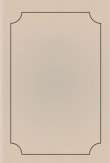قراءة كتاب Hugh: Memoirs of a Brother
تنويه: تعرض هنا نبذة من اول ١٠ صفحات فقط من الكتاب الالكتروني، لقراءة الكتاب كاملا اضغط على الزر “اشتر الآن"
aged 5
"Then said Great-heart to Mr. Valiant-for-Truth, Thou hast worthily behaved thyself. Let me see thy Sword. So he shewed it him. When he had taken it in his hand, and looked thereon a while, he said, Ha, it is a right Jerusalem Blade!"
The Pilgrim's Progress.
HUGH
I
HARE STREET
How loudly and boisterously the wind roared to-day across the low-hung, cloud-smeared sky, driving the broken rack before it, warm and wet out of the south! What a wintry landscape! leafless trees bending beneath the onset of the wind, bare and streaming hedges, pale close-reaped wheat-fields, brown ploughland, spare pastures stretching away to left and right, softly rising and falling to the horizon; nothing visible but distant belts of trees and coverts, with here and there the tower of a hidden church overtopping them, and a windmill or two; on the left, long lines of willows marking the course of a stream. The road soaked with rain, the grasses heavy with it, hardly a human being to be seen.
I came at last to a village straggling along each side of the road; to the right, a fantastic-looking white villa, with many bow-windows, and an orchard behind it. Then on the left, a great row of beeches on the edge of a pasture; and then, over the barns and ricks of a farm, rose the clustered chimneys of an old house; and soon we drew up at a big iron gate between tall red-brick gateposts; beyond it a paling, with a row of high lime trees bordering a garden lawn, and on beyond that the irregular village street.
From the gate a little flagged pathway leads up to the front of a long, low house, of mellow brick, with a solid cornice and parapet, over which the tiled roof is visible: a door in the centre, with two windows on each side and five windows above—just the sort of house that you find in a cathedral close. To the left of the iron gate are two other tall gateposts, with a road leading up to the side of the house, and a yard with a row of stables behind.
Let me describe the garden first. All along the front and south side of the house runs a flagged pathway, a low brick wall dividing it from the lawn, with plants in rough red pots on little pilasters at intervals. To the right, as we face the door, the lawn runs along the road, and stretches back into the garden. There are tall, lopped lime-trees all round the lawn, in the summer making a high screen of foliage, but now bare. If we take the flagged path round the house, turn the corner, and go towards the garden, the yew trees grow thick and close, forming an arched walk at the corner, half screening an old irregular building of woodwork and plaster, weather-boarded in places, with a tiled roof, connected with the house by a little covered cloister with wooden pillars. If we pass that by, pursuing the path among the yew trees, we come out on a pleasant orchard, with a few flower-beds, thickly encircled by shrubs, beyond which, towards the main road, lies a comfortable-looking old red-brick cottage, with a big barn and a long garden, which evidently belongs to the larger house, because a gate in the paling stands open. Then there is another little tiled building behind the shrubs, where you can hear an engine at work, for electric light and water-pumping, and beyond that again, but still connected with the main house, stands another house among trees, of rough-cast and tiles, with an open wooden gallery, in a garden of its own.
In the orchard itself is a large grass-grown mound, with a rough wooden cross on the top; and down below that, in the orchard, is a newly-made grave, still covered, as I saw it to-day, with




